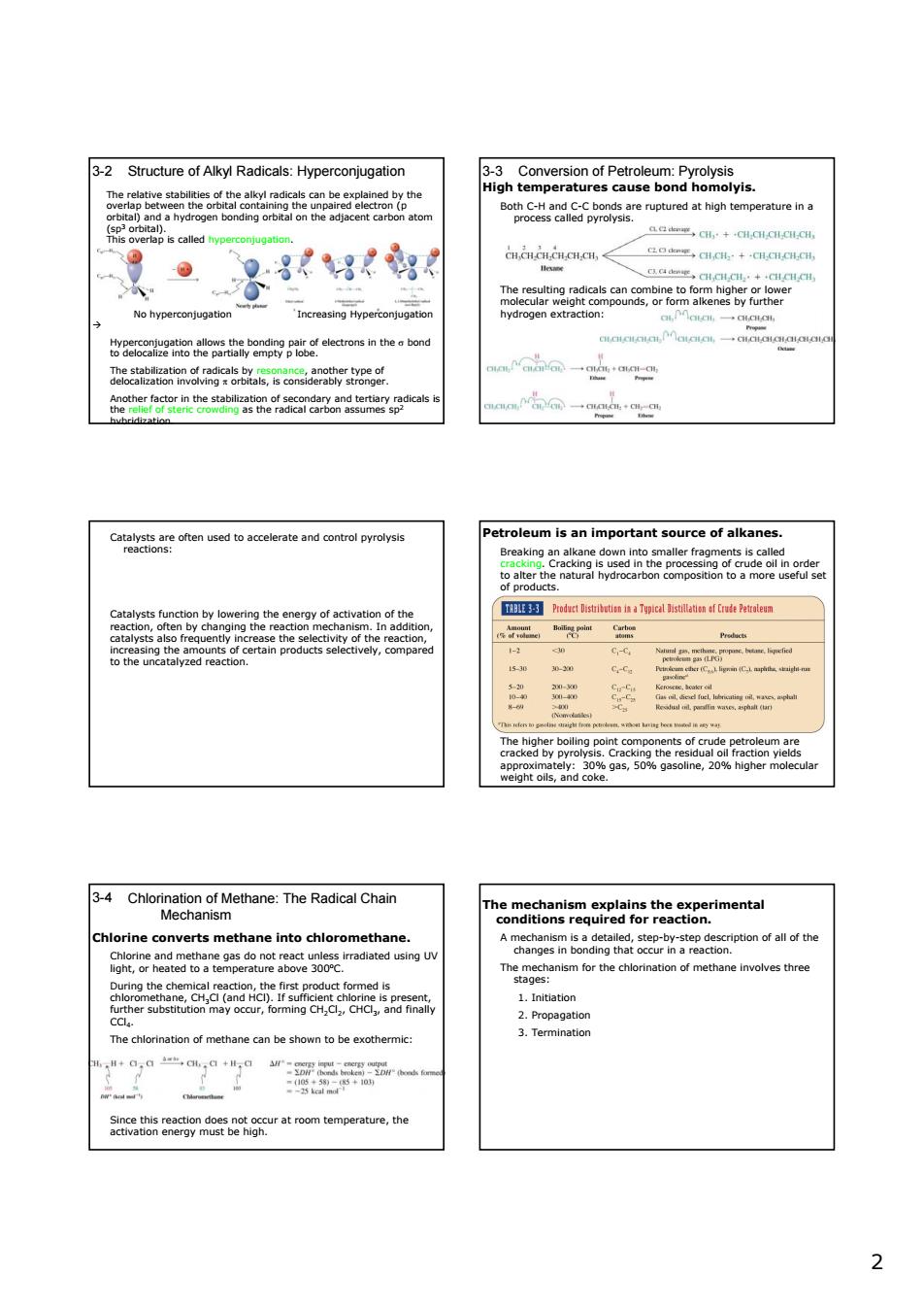正在加载图片...

3-2 Structure of Alkyl Radicals:Hyperconjugation ohctaSdfe2 ◆CH,·+CHIOLCH.CH ”。g88阳 +CH-+-CH0CC国 elthe of theb eocolnomerer oleum is an important source of alkanes. to alter th on of the C.C. 三 3-4Chlorination of Methane:The Radical Chain ine convert ion of all of th ho heated ttrc sm for the chlorin n of methane involves thre 3.Termination SaCao5aenaeiaotgratromtempenare,the 2 2 3-2 Structure of Alkyl Radicals: Hyperconjugation The relative stabilities of the alkyl radicals can be explained by the overlap between the orbital containing the unpaired electron (p orbital) and a hydrogen bonding orbital on the adjacent carbon atom (sp3 orbital). This overlap is called hyperconjugation. No hyperconjugation Increasing Hyperconjugation Æ Hyperconjugation allows the bonding pair of electrons in the σ bond to delocalize into the partially empty p lobe. The stabilization of radicals by resonance, another type of delocalization involving π orbitals, is considerably stronger. Another factor in the stabilization of secondary and tertiary radicals is the relief of steric crowding as the radical carbon assumes sp2 hybridization. 3-3 Conversion of Petroleum: Pyrolysis High temperatures cause bond homolyis. Both C-H and C-C bonds are ruptured at high temperature in a process called pyrolysis. The resulting radicals can combine to form higher or lower molecular weight compounds, or form alkenes by further hydrogen extraction: Catalysts are often used to accelerate and control pyrolysis reactions: o Zeolite,482 C,2min 3 456 17% 31% 23% 18% 11% Dodecane C + C + C + C + other products ⎯⎯⎯⎯⎯⎯→ Catalysts function by lowering the energy of activation of the reaction, often by changing the reaction mechanism. In addition, catalysts also frequently increase the selectivity of the reaction, increasing the amounts of certain products selectively, compared to the uncatalyzed reaction. Petroleum is an important source of alkanes. Breaking an alkane down into smaller fragments is called cracking. Cracking is used in the processing of crude oil in order to alter the natural hydrocarbon composition to a more useful set of products. The higher boiling point components of crude petroleum are cracked by pyrolysis. Cracking the residual oil fraction yields approximately: 30% gas, 50% gasoline, 20% higher molecular weight oils, and coke. Chlorination of Methane: The Radical Chain Mechanism 3-4 Chlorine converts methane into chloromethane. Chlorine and methane gas do not react unless irradiated using UV light, or heated to a temperature above 300oC. During the chemical reaction, the first product formed is chloromethane, CH3Cl (and HCl). If sufficient chlorine is present, further substitution may occur, forming CH2Cl2, CHCl3, and finally CCl4. The chlorination of methane can be shown to be exothermic: Since this reaction does not occur at room temperature, the activation energy must be high. The mechanism explains the experimental conditions required for reaction. A mechanism is a detailed, step-by-step description of all of the changes in bonding that occur in a reaction. The mechanism for the chlorination of methane involves three stages: 1. Initiation 2. Propagation 3. Termination